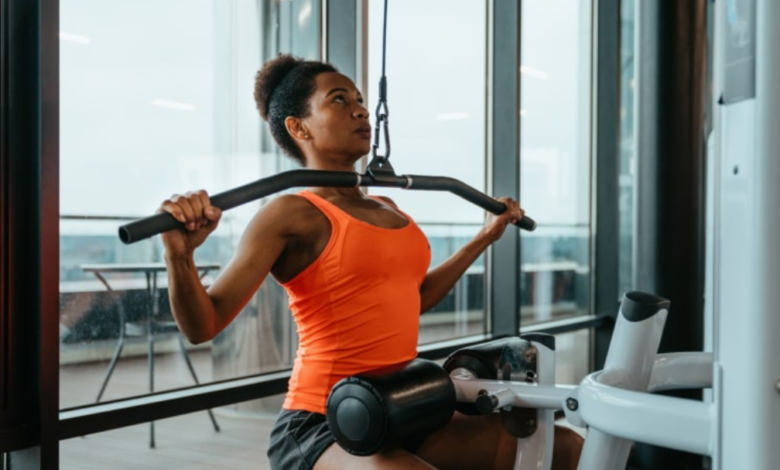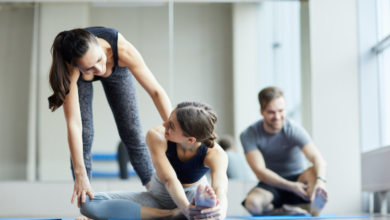10 Ideal Exercises to Improve Your Posture and Fix a Hunchback

Maintaining good posture is essential for overall health, preventing chronic pain, and boosting self-confidence. Poor posture, particularly a hunchback, can develop from prolonged sitting, screen time, or weak back muscles. Thankfully, targeted exercises can help strengthen your posture and alleviate the effects of kyphosis, commonly known as a hunchback. In this article, we’ll explore 10 ideal exercises that can help you stand tall and fix a hunched posture.
The Importance of Good Posture
Good posture ensures the proper alignment of your spine, minimizes stress on muscles and ligaments, and supports the healthy functioning of vital organs. A hunchback or rounded shoulders can cause neck pain, back pain, and even digestive issues. Regular posture-improving exercises can reverse these effects and promote spinal health.
Exercise 1: Cat-Cow Stretch
How It Helps:
The Cat-Cow stretch increases spinal flexibility and strengthens your back and abdominal muscles.
Steps:
- Start on all fours, with your hands under your shoulders and knees under your hips.
- Inhale as you arch your back, dropping your belly toward the floor (Cow pose).
- Exhale as you round your back, tucking your chin toward your chest (Cat pose).
- Repeat for 8-10 reps.
Exercise 2: Wall Angels
How It Helps:
Wall Angels help open up your chest and improve shoulder mobility, reducing rounded shoulders.
Steps:
- Stand with your back against a wall, feet a few inches away from it.
- Press your lower back, mid-back, and head against the wall.
- Raise your arms into a “goalpost” position and slowly move them upward and downward, mimicking a snow angel.
- Perform 2 sets of 10 reps.
Exercise 3: Chin Tucks
How It Helps:
Chin tucks strengthen the muscles in the front of your neck and improve neck alignment.
Steps:
- Sit or stand tall.
- Gently tuck your chin straight back (as if creating a double chin).
- Hold for 5 seconds, then release.
- Repeat 10 times.
Exercise 4: Reverse Plank Bridge
How It Helps:
This exercise strengthens your back, shoulders, and glutes while opening up your chest.
Steps:
- Sit on the floor with your legs extended and hands behind you, fingers pointing forward.
- Push through your hands and heels to lift your hips upward, forming a straight line from head to toe.
- Hold for 15-30 seconds, then lower.
- Repeat 3-5 times.
Exercise 5: Shoulder Blade Squeezes
How It Helps:
Shoulder blade squeezes activate the upper back muscles, helping to counteract forward-slouched shoulders.
Steps:
- Sit or stand tall.
- Squeeze your shoulder blades together as if holding a pencil between them.
- Hold for 5 seconds, then release.
- Repeat 12-15 times.
Exercise 6: Child’s Pose
How It Helps:
This restorative yoga pose stretches the spine, hips, and shoulders, relieving tension in the back.
Steps:
- Start on all fours, then sit back onto your heels, extending your arms forward.
- Relax your forehead onto the mat.
- Hold for 30 seconds to 1 minute.
Exercise 7: Thoracic Extensions
How It Helps:
Thoracic extensions improve mobility in the upper back, which is often stiff in individuals with poor posture.
Steps:
- Sit on a chair with a firm backrest.
- Place your hands behind your head and lean back over the top of the chair.
- Hold for a few seconds, then return upright.
- Repeat 8-10 times.
Exercise 8: Doorway Stretch
How It Helps:
This stretch opens up the chest and shoulders, reducing rounded shoulders caused by hunching.
Steps:
- Stand in a doorway with your arms at a 90-degree angle on the frame.
- Step one foot forward and gently press your chest through the doorway.
- Hold for 15-30 seconds.
- Repeat 2-3 times.
Exercise 9: Bird-Dog
How It Helps:
Bird-Dog strengthens the core and back muscles, improving spinal stability and posture.
Steps:
- Start on all fours, keeping your spine neutral.
- Extend your right arm and left leg simultaneously, keeping your hips level.
- Hold for a few seconds, then return to the starting position.
- Repeat on the other side. Perform 10 reps per side.
Exercise 10: Seated Rows with Resistance Bands
How It Helps:
This exercise strengthens the upper back and combats rounded shoulders.
Steps:
- Sit on the floor with your legs extended and loop a resistance band around your feet.
- Hold the band with both hands and pull it toward your torso, squeezing your shoulder blades together.
- Slowly release and repeat for 12-15 reps.
See also: How to Start Your YouTube Fitness Channel: A Step-by-Step Guide
Conclusion
Fixing a hunchback and improving your posture requires consistency and dedication. By incorporating these 10 exercises into your daily routine, you can strengthen your back, open up your chest, and realign your spine for a more confident and healthier posture. Remember to consult a healthcare professional if you have severe postural issues or pain before beginning a new exercise routine.
FAQs
1. How long does it take to see improvements in posture?
Consistency is key. Most people notice significant improvements in 4-6 weeks with regular exercise.
2. Can these exercises help with severe kyphosis?
These exercises are effective for mild to moderate cases. Severe kyphosis may require professional intervention.
3. How often should I do these exercises?
Aim for at least 3-4 times per week to see results.
4. Are there any other lifestyle changes to improve posture?
Yes, ergonomic work setups, regular breaks, and avoiding prolonged sitting are essential.
5. Can posture exercises reduce back pain?
Yes, these exercises can alleviate pain by strengthening and stretching key muscles.


